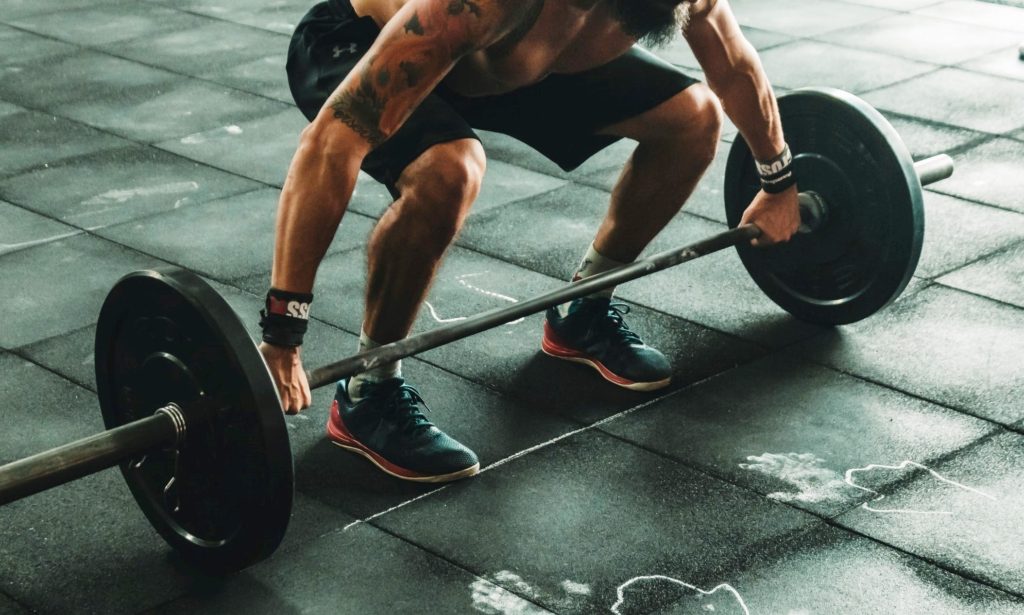Should Your Grandparents Hit the Gym?

Benefits of Weight Lifting for People Aged 60+
There are many myths about aging that make it difficult to develop a healthy attitude, let alone look forward to becoming elderly. Perpetuating these myths in society often leads young people gasping for air in disbelief if you’re not withered and crippled at 50… which is still only middle-aged.
Accepting these myths as a normal part of aging will only cause you problems. Acceptance prevents people from learning that there are simple things anyone can do to ensure that their golden years will be some of the best years of their life.
One of the biggest myths about aging is that
once you reach a certain age you need to take it easy and shouldn’t exercise
to avoid injury.
When you think of someone over the age of 65 do you imagine them as a scrawny old man or woman hunched over their cane? One of the reasons this image pops into our minds is because conditions like osteoporosis and sarcopenia do exist- but they’re also preventable.
Another common myth is that aging means dementia is inevitable. Dementia, especially Alzheimer’s, is common in old age but it’s not inevitable.
A proper diet, and good sleep will combat a good portion of the aging process, but exercise is also crucial.
There is one category of exercise that can help all issues regarding the aging process
that a person can start at almost any age:
weight-bearing/resistance exercise.
Weight-bearing/resistance exercises force your muscles to work against gravity. A number of exercises fall under this category including: hiking, jogging, and weight lifting. Even walking, dancing, climbing stairs, and getting up from your chair are mild weight-bearing/resistance exercises.
What makes this form of exercise special is that it strengthens your bones. Bicycling and swimming are great for strengthening your heart and muscles but they don’t fall under the weight-bearing/resistance category because they don’t tend to strengthen your bones.
One of the most debilitating age-related diseases is osteoporosis. Osteoporosis is bone loss to the point that your bones become frail and it’s often undetectable until a break occurs.
Essentially bone loss is due to the body reabsorbing calcium and phosphate from the bones at a higher rate than the replenishment of these minerals to the bones. This process weakens the bones, making them frail.
Strong bones are necessary for a strong body. They provide balance and support, enabling better posture. Not only does maintaining good posture make you feel great about the way you look and reduce stress-induced injuries, but having strong bones also means preventing osteoporosis and decreasing the likelihood of falls and fractures.
While weight-bearing/resistance exercises do prevent bone loss and even restore mass (the strengthening of bones), a special highlight should be made regarding weight lifting.
Weight lifting (aka weight training and strength training)
is the only low impact exercise
that stimulates new bone cell growth and
the absorption of significant amounts of calcium.
This makes it ideal for an elderly person who is just starting to exercise. Most exercises that stimulate new bone cell growth such as running are high intensity which jars the bones, joints, and ligaments. In contrast, with weight lifting there is no jarring of bones.
The new bone cell stimulation is entirely due to increasing weight load on bones, muscles, tendons, and ligaments while using slow controlled movements against gravity. As with all exercise, it takes time to reap the benefits and in the case of bone growth, it may take up to a year to garner the benefits.
Weight lifting is also a great choice for elderly people to combat sarcopenia. Sarcopenia is the loss of skeletal muscle mass and strength. This condition leads to a lack of endurance, turning normal activities into exhausting tasks which in turn, leads to less activity and then the loss of more muscle mass in a vicious cycle.
Muscle health consists of a balance between signals being deployed throughout the body to tear down muscle fiber (catabolism) and signaling to heal and build new muscle fiber (anabolism). This balance often gets disrupted as signals to heal and build new muscle fiber become less readable by the body as we age.
Becoming immobilized after an accident or living a sedentary lifestyle contribute greatly to this condition; as does severe stress, inflammation, and an unhealthy diet.
Weight lifting (with proper nutrition) is the only exercise proven to reverse sarcopenia
by stimulating a regrowth of muscle mass.
The great news about using weights is that the benefits start to show in as little as 8 weeks.
All weight-bearing/resistance exercises provide benefits and many are exercises that can be practiced at virtually any age. Another huge reason to get started is to prevent dementia, particularly Alzheimer’s. As the condition advances, memory and thinking skills decline to a degree where simple daily tasks become impossible.
Even if you’ve already been diagnosed with Alzheimer’s, it’s not too late to get moving and prevent the condition from worsening.
Not only can weight-bearing/resistance exercise help in preventing dementia,
but it’s possible to make significant improvements in
memory, decision making, and mood.
These improvements can add up to years of independent living.
In addition to combating osteoporosis, sarcopenia, and dementia, weight-bearing/resistance exercise provides a multitude of advantages:
- increased fitness,
- strength,
- confidence,
- balance,
- coordination,
- and better mood.
Live longer and be independent by preventing (or at least delaying) various heart diseases and cancers. Explore the many different types of exercises and use the time to be social and meet new people.
Even though most of the myths about growing old are misleading, it’s all too easy for those myths to become true. It often comes down to the choices you make. Let’s bust those myths, starting today!
Adopt a regular routine of exercise in addition to a nutritious diet and get proper sleep.
Take yourself along the best possible path to
happy and healthy golden years.
© Cherie Fournier 2021
